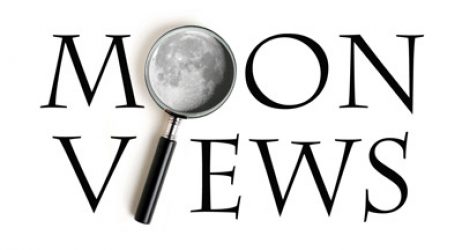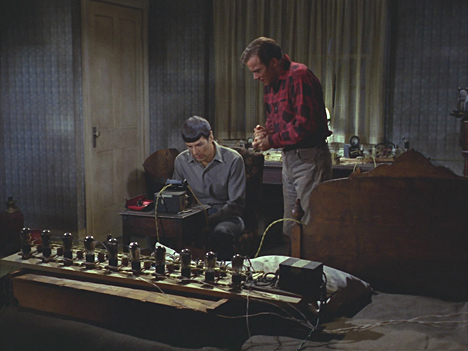According to Wikipedia: Messier is a relatively young lunar impact crater located on the Mare Fecunditatis. The crater has a discernible oblong shape that is not caused by foreshortening. The longer dimension is oriented in an east-west direction. Just to the west lies Messier A, a similar-sized crater with an oblong, doublet form. The longer dimension of this crater is oriented north-south, at right angles to Messier. This crater also has a curved bulge extending to the west. Messier A and B were photographed at high resolution by NASA’s Lunar Orbiter V spacecraft In August of 1967. The oblique angle view is the best available view of the craters.
This newly retrieved high resolution image, frame 5041_H3, was taken by Lunar Orbiter 5 on 10 August 1967 at 16:11 GMT LPI reference. Images: [large at LOIRP] [Very Large at NASA NLSI] Note: the large line arcing across this image is a photographic processing artifact that occurred during automated film processing in lunar orbit.
This newly retrieved high resolution image, frame 5041_H2, was taken by Lunar Orbiter 5 on 10 August 1967 at 16:11 GMT LPI reference. Images: [large at LOIRP] [Very Large at NASA NLSI]
This newly retrieved high resolution image, frame 5041_H1, was taken by Lunar Orbiter 5 on 10 August 1967 at 16:11 GMT LPI reference. Images: [large at LOIRP] [Very Large at NASA NLSI]









 “We are looking for people to help us complete the Lunar Orbiter Image Recovery Project (LOIRP). We call this technoarchaeology – mining the past to support science in the future. Between 1966 and 1967, NASA sent five Lunar Orbiter missions to the Moon. Their mission was to photograph the lunar surface to help identify future Apollo mission landing sites. The spacecraft carried 70mm photographic film which was developed automatically in lunar orbit aboard the spacecraft. The developed film was then scanned with a light beam and this modulated a signal which was sent back to Earth.”
“We are looking for people to help us complete the Lunar Orbiter Image Recovery Project (LOIRP). We call this technoarchaeology – mining the past to support science in the future. Between 1966 and 1967, NASA sent five Lunar Orbiter missions to the Moon. Their mission was to photograph the lunar surface to help identify future Apollo mission landing sites. The spacecraft carried 70mm photographic film which was developed automatically in lunar orbit aboard the spacecraft. The developed film was then scanned with a light beam and this modulated a signal which was sent back to Earth.” 





